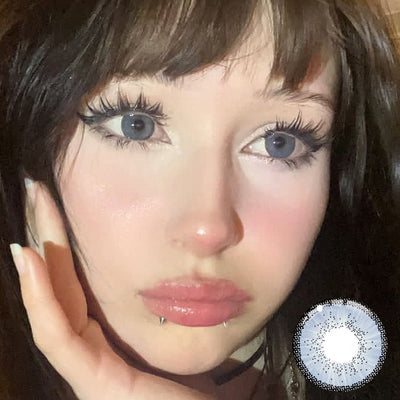Prescription Verification
For U.S. Customers Only
eyemoody’s number priority is caring about our customers’ heath. As such, we’ve implemented a prescription verification system that is in compliance with the Fairness to Contact Lens Consumer Law (FCLCA).
How does the verification process work?
In order to verify your prescription in the most efficient, convenient way possible, we can use one of two methods:
1. Upload your RX
You send the photo/scanned document of your prescription to our email support@eyemoody.com with your name and order ID when you place an order or create an account.2. Submit your doctor's name & phone number
You submit your optometrist’s name and phone number, and we'll call them to verify your prescription. This process takes 12 business hours. Our initial phone call is meant to inform your optometrist’s office of your provided prescription, so that they can, at their convenience, verify it by calling us.
The FCLCA requires that the contact lens vendor (eyemoody) must wait for at least 8 hours after the call before shipping anything. If the vendor (eyemoody) does not receive a response from the optometrist within this time frame, the vendor is allowed to process and ship the order.
What if I don't have a contact lens prescription?
You can easily find a doctor near to you to schedule a test by some online relevant service providers such as Visibly. Please send us the copy after you receive the prescription.
Alternatively, you can get an online eye exam with a contact lens prescription from the comfort of your own home. The service is offered by Opternative and costs US$40. After you receive the prescription, please send it to us either with the HIPAA-compliant upload form or when you place your order or via email ((support@eyemoody.com).
How do I know if my prescription is valid?
US law states that your eye prescription is valid for 1-2 years from the date of issue, depending on your eye care provider's state. This period is counted from the date your prescription was issued, which may not necessarily be the date of your eye exam.
How to Read Your Eyeglass Prescription
When you look at your eyeglass prescription, you'll see two headings:
*OD: This stands for the Latin term "oculus dexter," meaning "right eye."
*OS: This stands for the Latin term "oculus sinister," meaning "left eye."
If you see a heading labeled "OU," which is Latin for "oculus uterque," it refers to "both eyes."
Common Prescription Terms:
Your prescription may also include the following headings:
*SPH (Sphere): This indicates the diopter (D) needed to correct your vision. The further the number is from 0, the stronger the correction required. A minus sign (-) before the number means you are nearsighted (myopia), while a plus sign (+) means you are farsighted (hyperopia). At Eyemoody’s, we offer colored contacts that only correct myopia, not hyperopia.
*CYL (Cylinder): This number shows the diopter needed to correct astigmatism. It can have either a minus (-) or plus (+) sign. The further from 0, the more astigmatism correction you need. If this field is blank, it means no correction for astigmatism is necessary.
*Axis: This ranges from 0 to 180 and indicates the orientation of astigmatism based on the eye's curvature. Cylinder and Axis values are always paired. Sometimes, an "x" separates the Axis value from the Cylinder value, especially in handwritten prescriptions.
Example Prescription:
Here is an example of what a prescription might look like:
RX Sphere Cylinder Axis Prism Add* OD -3.50 -0.75 180 OS -2.00 -1.00 180 PD: 58
In this prescription:
*OD (Right Eye): Sphere is -3.50, Cylinder is -0.75, and Axis is 180.
*OS (Left Eye): Sphere is -2.00, Cylinder is -1.00, and Axis is 180.
By understanding these terms, you can better comprehend your eyeglass prescription and the corrections needed for your vision.



















